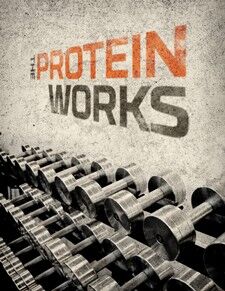Advice On Training

When is the best time to train?
What’s the best training for fat loss?
What is High Intensity Interval Training?
Does High Intensity Interval Training work?
What is semi-fasted cardio and how does it help you lose fat?
When Is The Best Time To Train?
-
Firstly it must be noted that despite all of the studies regarding hormonal response to morning vs evening training and muscle temperature and performance at different times of the day, the best time to train depends mostly on your own individual biology. It’s to do with something called your ‘chronotype’ and it’s this that dictates during what time of the day certain functions within a person optimally operate. This includes hormone levels, body temperature and cognitive functioning and it’s been shown they peak and decline in different people all depending on their ‘chronotype’. So if you find it hard to get up in the morning and train, maybe wait till the afternoon since your chronotype dictates that you work better at this time. But if you can spring out of bed in the morning and go straight to the gym then embrace this since go and train at 7am since again your chronotype dictates that you work better at this time.
What’s The Best Training For Fat Loss
-
The truth is that any muscular movement will burn calories so exercise of any form will help fat loss; however there are studies that show certain exercise protocols are better for lowering your body fat percentage compared to others.
What Is High Intensity Interval Training?
-
High Intensity Interval Training (H.I.I.T for short) is basically where you perform periods of moderate/ low intensity (working at roughly 65% of your maximum heart rate) followed by periods of high intensity (working at about 85%-90% of your maximum heart rate) and it can be performed on any type of cardio whether running, cycling or swimming. So just as an example, if you wanted to perform your H.I.I.T on a bike you would:
- Begin your workout with a 5 minute warm up
- Then complete 30 seconds working at a high intensity (85%-90% of your maximum heart rate)
- Followed by 60 seconds working at a low intensity (65% of your maximum heart rate)
- Perform 30 seconds high intensity again
- Then 60 seconds low intensity
- Alternate this high and low intensity training for 10 minutes
- Then complete a 5 minute warm down
Does High Intensity Interval Training Work?
-
Regarding how effective H.I.I.T is for lowering body fat, researchers from Laval University in Québec Canada set out to analyse how body fat levels and muscle metabolism were affected by the two different forms of training. The study took a group of young adults and divided them into 2 groups; Group 1 was subjected to a 20-week endurance-training program and Group 2 was subjected to a 15-week high-intensity interval-training (HIIT) program.
Interestingly it was found that although the group performing lower intensity cardio burnt more calories on average (120.4 mega joules) compared to the HIIT group (57.9 mega joules), muscle biopsies and body fat measurements revealed the HIIT program actually resulted in greater fat loss and an increased metabolism. This lead researchers to conclude that high intensity training ‘favours negative energy and lipid balance to a greater extent than exercise of low to moderate intensity. Moreover, the metabolic adaptations taking place in the skeletal muscle in response to the HIIT program appear to favour the process of lipid oxidation (fat loss).’ Put more simply H.I.I.T burns more fat (according to this study) than slow, steady paced cardio.
What Is Semi-Fasted Cardio And How Does IT Help You Lose Fat?
-
A very good question since semi-fasted cardio is still a topic of debate amongst strength and conditioning coaches to this day. It basically works on the principle that if you wake up in the morning and don’t eat anything but then go for a run you’ll be better able to tap into your body’s fat stores. It basically does this because when you’ve been sleeping you’ve also been fasting (not eating) which means when you wake up in the morning your muscle glycogen levels and insulin (fat storing hormone) levels will be low yet your adrenaline and glucagon levels (fat burning hormone) will be high. Basically what this means is the environment within your body is perfect for burning fat, this is compared to if you went for a run after a big bowl of pasta since the pasta would cause insulin and muscle glycogen levels to rise and glucagon levels to decline, which isn’t ideal for burning fat.
It’s certainly sound in theory and many bodybuilders when preparing for a competition will use this method to lower their body fat percentage. But other experts argue this form of exercise could be too catabolic to your muscles since your exercising on an empty stomach and so you’re more prone to muscle breakdown. This could be counteracted by only training at 65% of your maximum work rate (so a very low intensity) and making sure you don’t exceed more than 45 minutes training. Also some experts recommend taking 20 grams of a Whey Protein 90 (isolate) first thing in the morning since it’s so low in carbohydrates and sugars that it won’t cause insulin to rise and the small amount of protein and amino acids will help to spare muscle and stop it breaking down. Now you understand the principle behind semi-fasted cardio, our best advice would be to try it and see how your body responds.